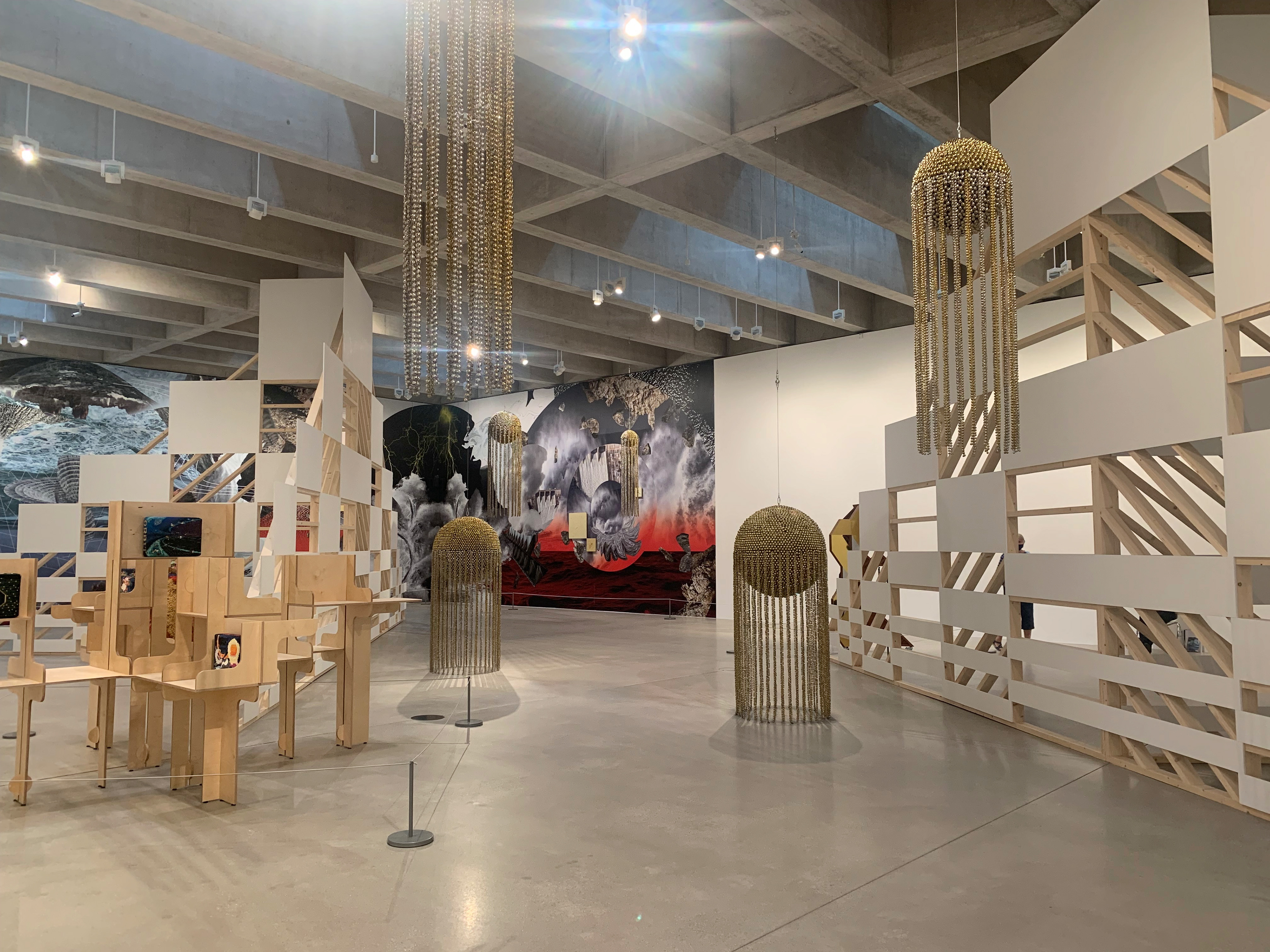A Century of The Artist's Studio: Whitechapel Gallery February 2022
This is a colossal exhibition revealing the world of the studio as a space where the artist is contained, free to explore, facilitating process and offering sanctuary, privacy or collaboration. We move from the studio as factory to a cell, an alchemist's chamber or a laboratory where experiments can be conducted free from judgemental influences. Encompassing video, performance, installation, paint, photography and sculpture, the exhibition will demand your time if you are not to be overwhelmed with the range and scope of exhibits on show including global names, iconic, historical and those working in the early 21st century. This is no airy white cube exhibition as work, installations and materials are closely juxtaposed and almost spilling at every turn as we pick our way through. We are more than spectator as we inhabit the working space and there is an intimacy as you step into the artist's 'room of their own'. It is influential in its scrutiny of the artist at work and how the 'studio' is not just 'space' but strongly influences 'process' as a place for collaboration, a personal prison/cell or portal, a test space, living space or haven. It raises questions as to how the studio influences our practice - whether we conform to or accommodate the studio in making work or if it is a space free of conventional restrictions. This leads our thoughts to the studio as the 'empty-nest' while the 'progeny' goes forward to be claimed by others, absorbing the viewers expectations, prejudices and opinions. The accompanying catalogue is comprehensive and possibly essential to help reflect on and contextualise just how much we have seen.
Betsy Bradley: Chasing Rainbows Ikon Gallery Birmingham December 2021
Ikon gallery sits well within the city centre - sited within a Victorian schoolhouse it feels intimate and belonging to Birmingham's history and rejuvenation. I have personal memories of Ikon growing and developing in the city and the changes to the site in Brindley Place so it is pleasing to enter the modern conversion within the architectural features which complements the open gallery spaces over two floors which are flooded with natural light. It is this feature that works well with Betsy Bradley’s work – Chasing Rainbows.
Bradley’s stated intention is to release the fluid energy of a mark onto the surface and her choice of surface is translucent so that the painted calligraphic marks are isolated and sculptural. Some works are displayed as stretched, others hang loose as a screen and, in the main gallery, fall from the high ceiling as a sculptural waterfall or floating as a canopy. Light filters through these works to present the in-between of her thoughts and process onto the surface where the ‘moiré’ markmaking is overpainted and contrasts with textural seams of paint. The marks are gestural and pared back showing the influence of her time spent painting in Japan. Simply she aims for a material visualisation of elements that are everyday phenomena – our thoughts, the energy of emotions and light.
Chasing Rainbows is an immersive experience filled with light and colour to create a meditative space. Within the churchlike gallery and soaring window spaces this does evoke a sense of the spiritual and Buddhist emptiness. Time spent with the work is an opportunity to lead our thoughts beyond our material world into the intangible and transient. It was an inspirational visit and enhanced my concept of 'thought embedded in material'.
Haegue Yang: Strange Attractors Tate St Ives September 2021
The artist's intent is stated as a response to the natural world - the science and mathematics behind chaos. In the main gallery she creates a visual spectacle - a chaotic universe referencing systems of belief and art with sculptures and landscapes that are mystical and other-worldly.
I found myself much more drawn to the modest exhibition discussing acts of folding and unfolding to form interrupted perspectives, drawing a veil across the iconic view of the coastline which has proved contentious with those visiting the gallery for its glorious position. However, I believe the point is that the familiar is disguised so that we see only aspects and imprints which change depending on your perspective. These representations of negative space or absence of objects inform a personal practice in representing what is hidden or covered - traces of what has been and a space for thoughtfulness.



